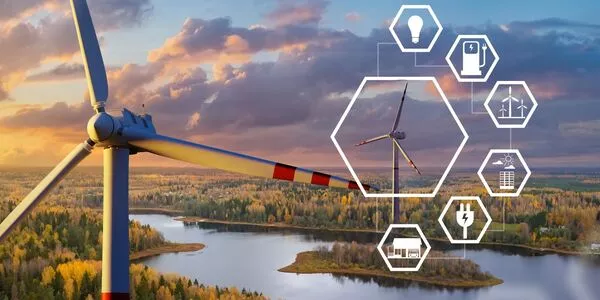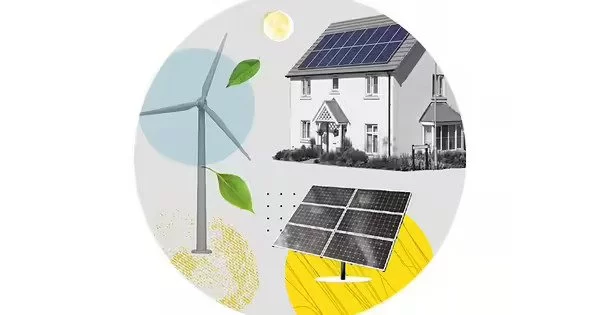Graphite is a critical material used in the production of lithium-ion batteries, which are used to power electric vehicles and store renewable energy. Currently, China dominates the graphite market, accounting for around 70% of global production. However, as the demand for electric vehicles and renewable energy storage grows, there is a need for increased graphite production outside of China.
Ramping up domestic graphite production could indeed aid the green energy transition by reducing dependence on China and ensuring a stable supply of graphite for battery production. It could also potentially reduce the environmental impact of graphite mining by subjecting it to stricter environmental regulations and improving sustainability practices.
Given the growing importance of graphite in energy storage technologies, a team of Northwestern researchers conducted a study to investigate ways to reduce reliance on imported graphite, which powers everything from electric vehicles (EVs) to cell phones.
The paper, published this week in the journal Environmental Science and Technology, is the first natural and synthetic graphite material flow analysis for the United States, and it considers 11 graphite end-use applications, two waste management stages, and three recycling pathways.
“If we want to produce more batteries domestically, we’re going to need to increase our production of graphite,” said Northwestern University chemical engineer Jennifer Dunn. “But the question is, how can we do so in a way that contributes to decarbonization goals?”
You can recover some graphite by recycling lithium-ion batteries, but batteries last a long time, so it could be a decade before you can recover graphite from EVs that reach the end of their life.
Jennifer Dunn
Dunn is an associate professor of chemical and biological engineering at Northwestern’s McCormick School of Engineering and director of the Center for Engineering Sustainability and Resilience. The paper was co-authored by Jinrui Zhang, who at the time of the study initiation was a post-doctoral scholar in chemical and biological engineering, and Chao Liang, previously a member of Northwestern’s Institute for Sustainability and Energy (ISEN). Both co-authors are alumni of Dunn’s research group.
The majority of graphite used in the United States is synthetic graphite, which is made from byproducts of the fossil fuel industry. This creates a paradoxical relationship between graphite and technologies such as electric vehicles (EVs), which aim to remove fossil fuel supply chains from transportation and reduce greenhouse gas emissions.
Natural graphite, on the other hand, is mined and imported into the United States, primarily from China. Almost all graphite used in the United States is used in electrodes for steel manufacturing. As the battery supply chain in the United States expands, legislation such as the Inflation Reduction Act aims to encourage the use of domestically sourced materials, such as graphite, in American-made batteries.

Given the growing importance of graphite in energy storage technologies such as lithium-ion batteries, the team conducted this analysis to characterize the mineral’s major production routes, main uses, and opportunities for consumption reduction through recycling. The study relied on data from 2018, the most recent period with sufficient data for this type of analysis.
Most of the graphite consumed in the U.S. in 2018 was synthetic graphite, with 63% of this graphite produced domestically. Production of synthetic graphite emits more greenhouse gases than mining natural graphite (Natural graphite has between 62% and 89% lower greenhouse gas emissions). Synthetic graphite is also more expensive. However, the U.S. does not mine natural graphite but imports it, predominately from China.
Graphite is used primarily for electrodes in steel production because it is the only material that conducts electricity other than metal. More graphite may be consumed in electrode production as demand for low-carbon steel rises. Graphite burns and dissipates during steel production, much like graphite pencils do as you write with them. Though recovering dissipated graphite is not impossible, it is rare, limiting opportunities to recover the mineral through recycling. Technologies for recovering graphite from lithium-ion batteries are maturing but are not yet widely used.
Dunn said that part of the focus on domestic sources and recycling of graphite-containing products like lithium-ion batteries is based on the current supply chain’s potential instability and projected increasing demand.
“You can recover some graphite by recycling lithium-ion batteries, but batteries last a long time, so it could be a decade before you can recover graphite from EVs that reach the end of their life,” Dunn explained. “However, we are also developing the bioeconomy in the United States, which may include the production of graphite from biomass. This opens up a new supply option in addition to making graphite from byproducts of the fossil fuel industry or mining.”
With the passage of the Inflation Reduction Act of 2022, more funding will be directed toward the use of domestically sourced and recycled graphite, according to Dunn, and the United States must be prepared to make the transition.





